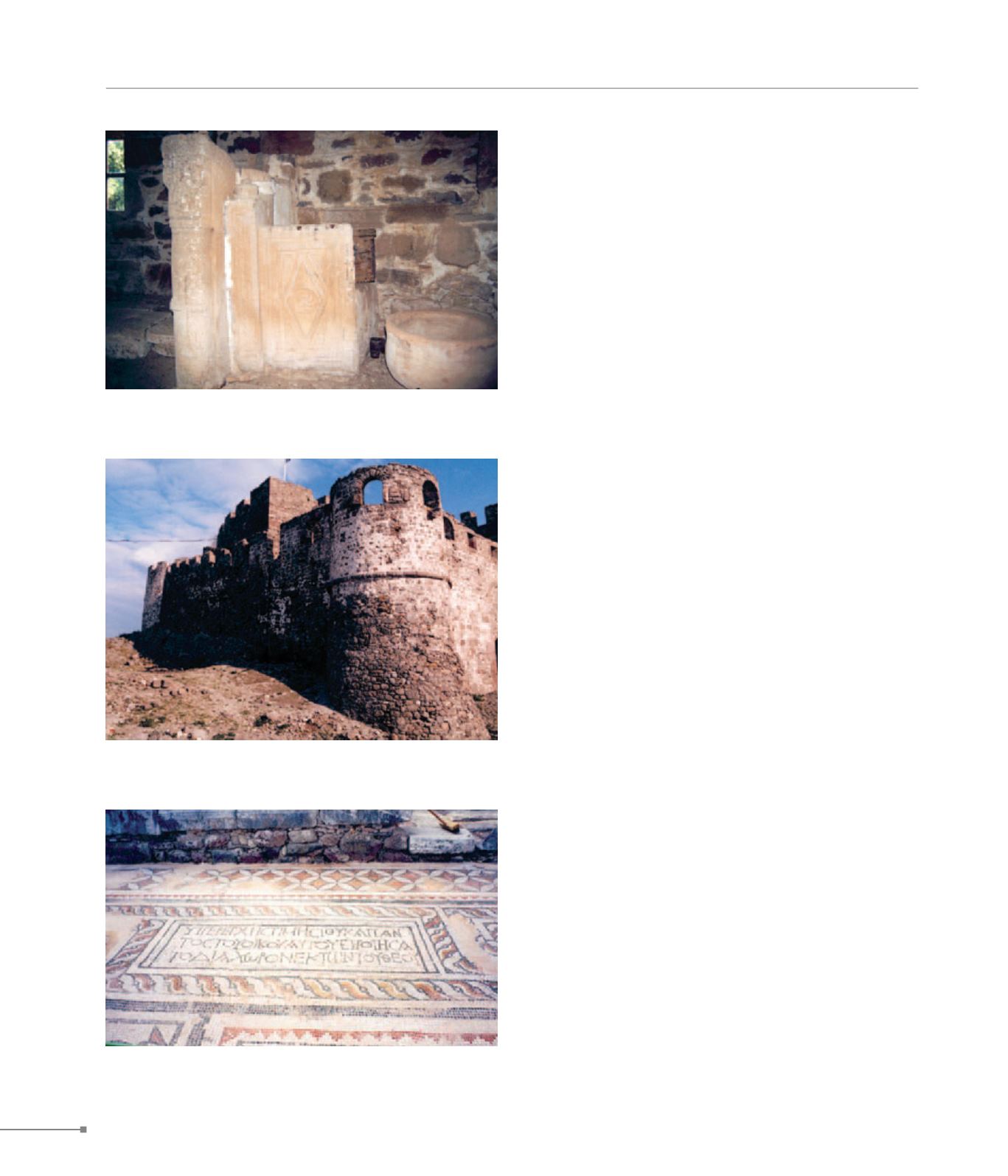
Lesbos.
Lesbos.
THE ISLANDS
322
Panagia Salone Church at Aghia Paraskevi. (14)
Panagia is a small, single-nave church surviving at the foun-
dations level. It was built of carved stones and in the apse of
the bema there are Early Christian architectural components.
Judging by the conches opening in the E and S and forming
a cruciform ground plan, it is thought that the church also had
a Mid-Byzantine phase.
Mantamado. (15)
The domed, cross-in-square church of Aghios Stephanos can
be dated to the 13th c.
Kremaste Bridge. (16)
This is a one-arched bridge over the river Tsiknias at a short
distance from the village of Aghia Paraskevi. Many building
phases may be discerned, while the ancient material incorpo-
rated in the masonry is presumed to have originated from the
neighbouring sanctuary of Klopedi, along with parts of Early
Christian panels and mullions. The bridge connected the N
part of the island with the SW.
Hypsilometopo. (17)
At the S foot of Mount Lepetymnos are the ruins of a three-
aisled Early Christian basilica with narthex, dedicated to
Aghios Demetrios. The semicircular apse of the bema is sur-
rounded by pastophories. Adjoined to the narthex was a mon-
umental propylon. The floors of the nave and the bema were
originally covered with mosaics. There are annexes around
the edge. The church and mosaics are dated to the second
half of the 6th c.
Methymna Fortress. (18)
On the N side of Lesbos, approximately 60 km from Mytilene
stands the fortress of Methymna, one of the most well-pre-
served fortresses on the island. The walls include 10 quadrilat-
eral towers. The fortress acquired its current form in the period
of Turkish domination, and has had more than one building
phase. From the original phase, before 1334, only the cistern
survives; elements of the ancient citadel have been found at
the base of two towers. The internal third gate and the lower
section of the fortification date to the second half of the 14th c.
Tsamour Limani. (19)
Close to Tsamour Limani, at Salvarades Skalochoriou, near
the ruins of an Early Christian basilica remnants of the church
of Aghioi Theodoroi survive at a good height.
Hypsilon Monastery. (20)
This is an active monastery dedicated to Saint John Theol-
ogos. According to tradition it was founded by Hosios The-
ophanes the Confessor of Sigriane. An unverified attestation
to its existence in the Mid-Byzantine period is the inscription
of the year 1011, embedded in the catholicon. The first cer-
tain mention of the monastery has been found in a patriarchal
document of 1331: “the monastery of Saint John Theologos in
the parish of Korakas”. The re-establishment of the monastery
572. Lesbos, sklala Eresou, Aghios andreas basilica, mosaic (Λέσβος,
Σκάλα Ερεσού, βασιλική Αγίου Ανδρέα, ψηφιδωτό)
572. Lesbos, Mythimna fortress (Λέσβος, κάστρο Μήθυμνας)
572. Lesbos, Hypsilometopo, sculptures (Λέσβος, Υψηλομέτωπο,
γλυπτά)


